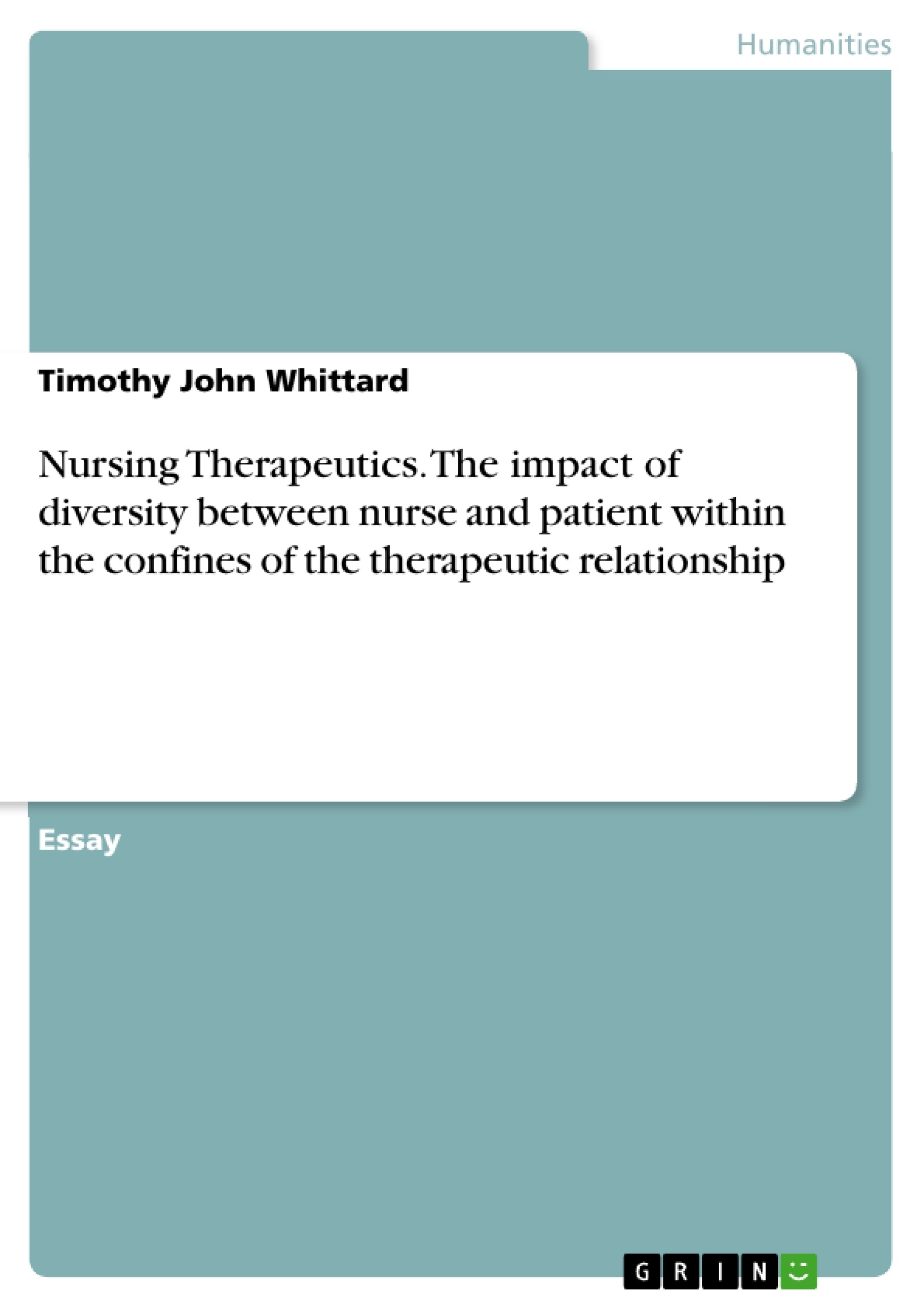This essay aims to discuss and explore the impact of diversity between nurse and patient within the confines of the therapeutic relationship; this is achieved through reflecting upon an interaction which occurred between a patient and myself during clinical practice.
Peplau (1952) considers the therapeutic relationship to be the central focus of all nursing practice. Furthermore, Graham (2001), Lauder et al (2002) and Hewitt and Coffey (2005) all describe the therapeutic relationship as forming the “cornerstone” of modern nursing practice. Egan (1994) illustrates the ‘skilled helper model’ of counseling, which is reported by Sloan (1999) to promote warmth and genuineness during interactions with patients; this model focuses on the patient (Egan, 1994), and can be described as a “humanistic” approach to helping (Jones, 1998). It is for these reasons that I have elected to apply the use of this model to the interactions, which occurred between the patient and myself.
Explicit consent was obtained from the patient in question for the material which was obtained during these interactions to be used within this assignment; and in order to conform to the code of conduct detailed by the Nursing and Midwifery Council, and to maintain the confidentiality of the patient, throughout this essay they will be referred to as Howard.
Howard is a 38-year-old man, who had been unemployed and living in ‘bed and breakfast’ accommodation for the six months preceding his admission to hospital, following the breakdown of his marriage. It appeared that the stress, which culminated with the separation from his wife and their pending divorce, had led to a progressive deterioration in his mental state and mood, which had made it difficult for him to work.
Inhaltsverzeichnis (Table of Contents)
- The Therapeutic Relationship
- The Skilled Helper Model
- Patient Details
- Interaction with Howard
- Diversity
Zielsetzung und Themenschwerpunkte (Objectives and Key Themes)
This essay aims to explore the impact of diversity between nurse and patient on the therapeutic relationship. It uses a real-life interaction with a patient named Howard to illustrate key concepts.
- The importance of the therapeutic relationship in nursing practice
- The use of the skilled helper model in promoting patient empowerment
- The potential impact of diversity factors on the therapeutic relationship
- The need for sensitivity and awareness of diversity in nursing care
- The ethical considerations in maintaining boundaries within the therapeutic relationship
Zusammenfassung der Kapitel (Chapter Summaries)
- The Therapeutic Relationship: This section explores the concept of the therapeutic relationship in nursing, highlighting its importance and key characteristics. It examines different definitions and perspectives on this relationship, emphasizing its goal-oriented nature and potential benefits for both nurse and patient.
- The Skilled Helper Model: This chapter introduces the skilled helper model of counseling, which emphasizes warmth, genuineness, and patient empowerment. It outlines the three stages of the model, focusing on problem identification, goal setting, and strategy development. The chapter argues that this model can enhance patient understanding, responsibility, and feelings of hope.
- Patient Details: This section provides details about Howard, the patient involved in the interaction described in the essay. It outlines his background, his mental health challenges, and the reasons for his hospitalization. The goal of the interaction with Howard is to discuss potential employment and accommodation options.
- Interaction with Howard: This chapter describes the interaction between the nurse and Howard, emphasizing the use of open questions and paraphrasing to facilitate effective communication. It also highlights the potential benefits of these communication techniques in building rapport and understanding.
Schlüsselwörter (Keywords)
The essay focuses on the therapeutic relationship in nursing, particularly in relation to diversity. Key concepts explored include patient-centred care, the skilled helper model, diversity factors (culture, age, gender, ethnicity), stereotyping, social stigma, and ethical boundaries within the therapeutic relationship.
- Quote paper
- Timothy John Whittard (Author), 2007, Nursing Therapeutics. The impact of diversity between nurse and patient within the confines of the therapeutic relationship, Munich, GRIN Verlag, https://www.grin.com/document/470792



